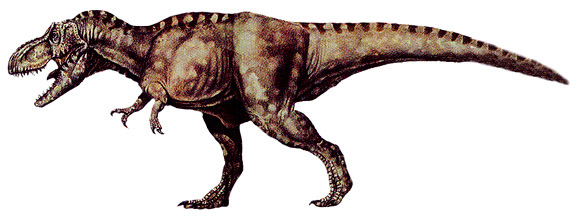
Dinosaurs have a 175 million-year history beginning
in the Permian period and extending
through the Triassic and Jurassic periods to the
Cretaceous, the last period in the Mesozoic era,
which lasted 160 million years and ended 65 million
years ago. Tyrannosaurus dates to the latter
part of the Cretaceous period, which ceased when
a great deal of life on earth disappeared for reasons
that are not fully known, although it is speculated
that a huge meteor crashed into earth, causing
a heavy cloud to hang over the planet long
enough to kill most vegetation.
No land animal weighing over about fifty-five
pounds survived whatever catastrophe caused the
sudden end of an era when huge animals roved the
earth. Tyrannosaurus, the largest terrestrial carnivore,
was almost forty feet long. Tyrannosaurus had
a huge head, a large mouth, and menacing teeth.
Physical Characteristics and Habitat
An adult Tyrannosaurus standing upright would
have been as tall as a four-story building, but
Tyrannosaurus did not stand erect. Its hind legs
provided sturdy underpinnings, whereas its arms
were short and weaker than its legs. They could be
used defensively when necessary. Fossil footprint
evidence substantiates that Tyrannosaurus has feet
over three feet long.
This dinosaur depended on its hind legs for
most of its locomotion, although it used its arms
minimally when it walked. Bulky in the midsection,
its long tail aided its balance. Its long neck
supported a huge head with a large mouth and
seven-inch-long serrated teeth. Adults weighed
about seven tons.
Most of the extant remains of Tyrannosaurus
have been found in the United States, mostly in
the South Dakota, Montana, and Wyoming Badlands.
The first three Tyrannosaurus rex remains
were found in Montana andWyoming in the early
1900's. This area was also inhabited by duckbilled
dinosaurs, much smaller animals than
Tyrannosaurus, who were often eaten by their
larger counterparts.
During the late Cretaceous period, the area in
which Tyrannosaurus remains were found was
warmer than it currently is. It is known fromfossil
remains that its climate resembled the current climate
of the southern states. The area was rich in
such plant life as ferns, palm trees, redwoods, and
flowering plants, which contributed to the diet
of dinosaurs. The preserved contents of Tyrannosaurus
stomachs reveal that they ate many of
these plants.
Most of the animals that coexisted with dinosaurs
were small, seldom exceeding the size of a
domestic cat. Birds were abundant, as were such
insects as spiders and beetles. Opossums existed
in large numbers, and the waterways of the ancient
landscape were filled with fish and turtles,
all of which became part of the Tyrannosaurus diet.
One thing is clear: For a period of 150 million
years, dinosaurs ruled the earth. They were the
largest, most complex organisms in existence, and
Tyrannosaurus was preeminentamongdinosaurs.
Tyrannosaurus rex lived closer to the beginnings
of human existence than it did to the time when
the earliest dinosaurs roved the earth. Some paleontologists
believe that it was descended from a
species of carnivores in Mongolia that migrated
from Asia to North America over a formation that
once bridged the Bering Straits, but has since disappeared.
The Badlands are the richest depository
in the United States discovered to date of dinosaur
remains.
The Largest Tyrannosaurus rex Ever Found
Peter Larson, an independent collector of fossils
who knew a great deal about paleontology, unearthed
the skeleton of Sue, the largest and
most perfect Tyrannosaurus skeleton ever
found. Painstakingly cleaned and reassembled,
it is dramatically displayed in Chicago's
Field Museum.
Sue was discovered by Sue Hendrickson
in August of 1990, when she noticed
three large dinosaur vertebrae and a femur
protruding from a cliff in the Badlands
of South Dakota. These items obviously
belonged to Tyrannosaurus because the vertebrae
were concave from the disk, unlike
the straight vertebrae of duck-billed dinosaurs.
With Larson's help, Hendrickson determined
that because part of its skull was
damaged, Sue died in some sort of conflict.
Sue had suffered a fractured fibula that
healed but that must have left her defenseless
for some time. Contents of its stomach
indicated that Sue's last meal was a duckbilled
dinosaur.
Tyrannosaurus Facts
Classification:
Kingdom: Animal
Subkingdom: Bilateria
Phylum: Craniata
Subphylum: Tetrads
Class: Protheria
Order: Saurischia
Suborders: Theropoda (four-toed bipeds), Sauropodomorpha
(lizard-footed, five toes), Carnosaurus
(large predators)
Geographical location: Every continent except
Antarctica
Habitat: Land
Gestational period: Unknown; presumably two
to three years
Life span: Unknown; presumably over fifty years
Special anatomy: Strong hind legs, with arms
weaker than the legs; two fingers on each
hand; large head; sharp, serrated teeth
Other popular Animals
Photo Gallery of - Tyrannosaurus
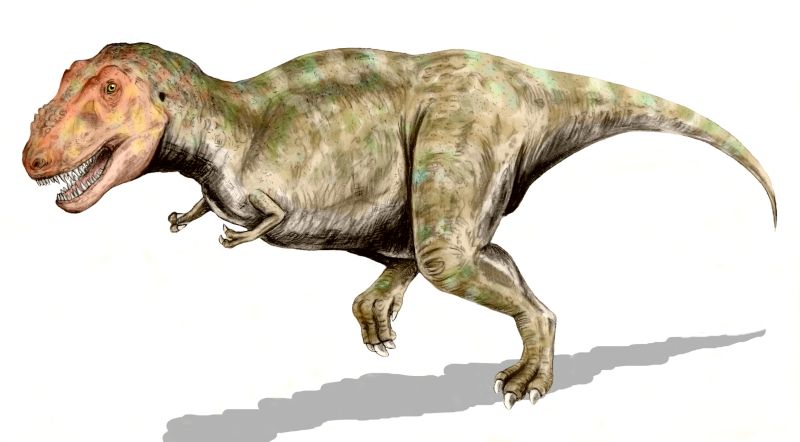

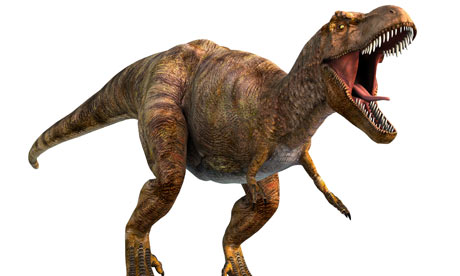
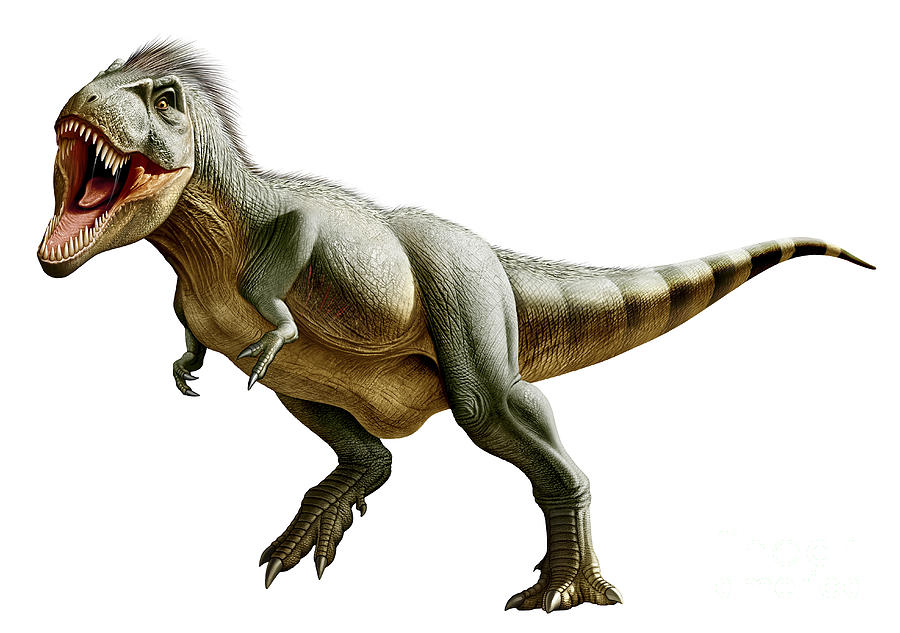

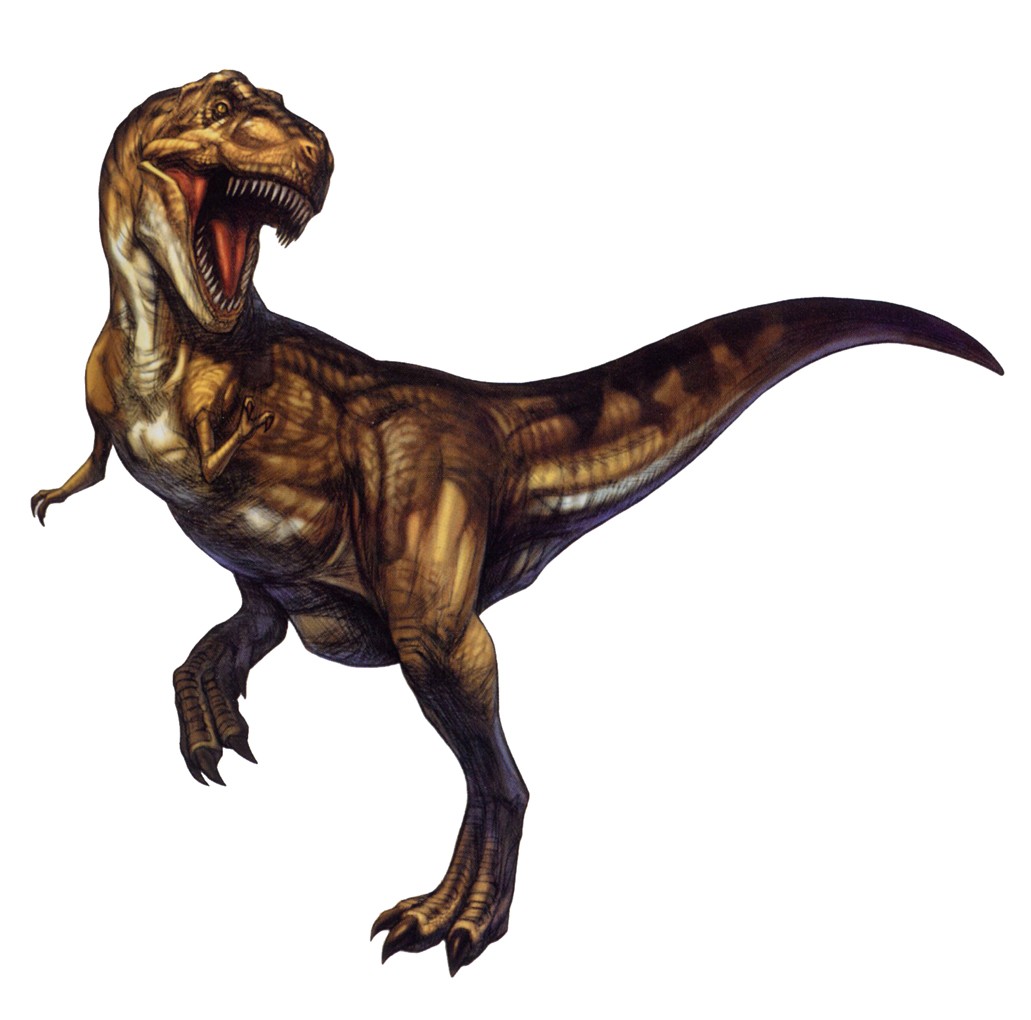


 Animalia Life
Animalia Life